Community participation
in the concept development, exhibition structure in the form of brainstorms, focus-groups, ideas contests, votes
What we did:
We were lucky to attract a quite active and creative audience to the concept design – two departments of the Ural Federal University sent 40 trainees to our museums including 1st-5th year students with majors in Cultural Studies, Fine Art history, Tourism and Socio-cultural activities, some of them being quite grown up part-time students. One powerful team was organized with mini-group discussions and brainstorming activities.
The combinations of different concentrations students as well as the project workshop format were not common for both the museum and the students themselves. The challenges embraced the exhibition concept design and its mobile application (only basic project products) alongside the evaluation of viewers' engagement in museum co-creation effectiveness.
The majority of students turned to be quite active travelers, which allowed us to see them as a target project group and their exposition concept as a variant of a generalized modern visitor perception.
Our focus group participants asked their relatives, friends and themselves this question: What would you like to see at "The travel" exhibition"?
In the manifold of ideas several were most common.
A quite evident geography-oriented approach with modifications was offered: a miniature country (a sort of "Toy Village"), aircraft fuselage with portholes – views of historic and modern cities and immersion in culture through smells, clothes, sights, rituals, cuisine, music. There was a variant of compass- and, East-West- division exhibition.
The second group of ideas emphasized chronology of civilization stages – travelling from the past to the future with stops at different epochs, which gave the opportunity to trace pilgrimage evolution, to compare the past with the present, to realize how our perceptions of travel have changed.
The third variant implied to design the exhibition space as a set of famous travelers of the past routes where visitors could follow their itinerary and discover new lands.
Less popular versions included types of tourism and art genres (travel in cinematography, literature, fine arts, photography, etc.).
We were lucky to attract a quite active and creative audience to the concept design – two departments of the Ural Federal University sent 40 trainees to our museums including 1st-5th year students with majors in Cultural Studies, Fine Art history, Tourism and Socio-cultural activities, some of them being quite grown up part-time students. One powerful team was organized with mini-group discussions and brainstorming activities.
The combinations of different concentrations students as well as the project workshop format were not common for both the museum and the students themselves. The challenges embraced the exhibition concept design and its mobile application (only basic project products) alongside the evaluation of viewers' engagement in museum co-creation effectiveness.
The majority of students turned to be quite active travelers, which allowed us to see them as a target project group and their exposition concept as a variant of a generalized modern visitor perception.
Our focus group participants asked their relatives, friends and themselves this question: What would you like to see at "The travel" exhibition"?
In the manifold of ideas several were most common.
A quite evident geography-oriented approach with modifications was offered: a miniature country (a sort of "Toy Village"), aircraft fuselage with portholes – views of historic and modern cities and immersion in culture through smells, clothes, sights, rituals, cuisine, music. There was a variant of compass- and, East-West- division exhibition.
The second group of ideas emphasized chronology of civilization stages – travelling from the past to the future with stops at different epochs, which gave the opportunity to trace pilgrimage evolution, to compare the past with the present, to realize how our perceptions of travel have changed.
The third variant implied to design the exhibition space as a set of famous travelers of the past routes where visitors could follow their itinerary and discover new lands.
Less popular versions included types of tourism and art genres (travel in cinematography, literature, fine arts, photography, etc.).
In should be noted that by that stage the authors of the project had already had a draft topic and it seemed more preferable to us as those of the students'. But it was our plan and we couldn't enforce it upon the students. It contradicted the project principles and could negatively affect our co-authors' motivation. There was one thing left for us - to offer our scenario for group discussion.
However, we didn't have to do it. The last speaker forwarded almost the same plan: to organize the exposition in terms of the very travel plot and its stages: from a dreamt-of destination to arriving home. The idea was approved almost unanimous, which determined its person-centered character, and the fact that it gracefully united the ideas of the rest of the authors.
The devised model was taken by the group as "their own", and the author could be proud of himself to see it realized one year later.
The next stage consisted of a detailed design of 5 exhibition sections: choosing destination, preparations, pathway, another world, memories, each of them elaborated by the group of 3-4 members. The rest of trainees were involved in other exhibition elements development: mobile application concept, souvenirs-line, and viewers' engagement techniques.
It took 10 days of brainstorming and discussing to work out our content and interpretation.
However, we didn't have to do it. The last speaker forwarded almost the same plan: to organize the exposition in terms of the very travel plot and its stages: from a dreamt-of destination to arriving home. The idea was approved almost unanimous, which determined its person-centered character, and the fact that it gracefully united the ideas of the rest of the authors.
The devised model was taken by the group as "their own", and the author could be proud of himself to see it realized one year later.
The next stage consisted of a detailed design of 5 exhibition sections: choosing destination, preparations, pathway, another world, memories, each of them elaborated by the group of 3-4 members. The rest of trainees were involved in other exhibition elements development: mobile application concept, souvenirs-line, and viewers' engagement techniques.
It took 10 days of brainstorming and discussing to work out our content and interpretation.
Developing the exposition sections we were guided by subjective experiences, interests, and personal stories of group members. We discussed what affected us deeply and what did not, looked for "live" topics, the ones that could trigger sharing and debating. In a word, we discussed everything that could act as a productive framework for presenting and interpreting the museum collection.
Content of the latter was generally obvious from the outset and later was coordinated with the collection items and stories, though this matching was secondary as the majority was "carried away" by the issues concerning different ways of travelling and what should be displayed.
What we obtained:
- themes, frames, emphases, personal stories, contemplations
- loyal co-authors (See traineeship report available on urfu.ru):
Content of the latter was generally obvious from the outset and later was coordinated with the collection items and stories, though this matching was secondary as the majority was "carried away" by the issues concerning different ways of travelling and what should be displayed.
What we obtained:
- themes, frames, emphases, personal stories, contemplations
- loyal co-authors (See traineeship report available on urfu.ru):
"I couldn't imagine that my first impression of the project would change so radically, that I would get interested and even thrilled with its creation. But, the traineeship comes to its end and it is the time to say goodbye to the project and people developing it. I'm looking forward to the spring as I'm longing to visit the exhibition that has become so close to my heart" (Senuk Elizaveta, a 2nd-year Fine Arts student, Arts and Cultural studies department).
It was quite interesting to be engaged in the project; the most pleasant part is that I could manage to contribute to it. I like it when guys are positive and keep smiling even if they have had inadequate night's sleep. I want to thank our curators who did everything to make us feel relaxed and not alienated"(Feofanova Yuliya, 2nd year History Department student, major – "Tourism")
«I was "hooked" by the project, I witnessed positively relaxed, ideas-generating people. I want to believe that at least a small portion of "us' will remain in the final variant" (Anan'ina Olga,2nd- year History Department student, major – "Tourism").
«I looked at the museum with new eyes, it appears to be not only mentally beneficial but also enticing. Modern and novel expositions of the Sverdlovsk Local History museum impressed me. It was great to see the museum from the "inside", and, naturally I'd like to see the fruits of our labors as soon as possible" (Lyovina Marina, a 2nd-year student of Arts and Cultural studies department, major – Socio-cultural Activities).
"It is the 1st time in five years that I have had a traineeship in a group, which entails new acquaintances, peer discussion and positive spirit. In addition, it is pleasant to experience involvement in something great let along the process of concept creation itself (Fedotova Valeriya, 5th –year student of Arts and Cultural studies department, major – Fine Arts).
It was quite interesting to be engaged in the project; the most pleasant part is that I could manage to contribute to it. I like it when guys are positive and keep smiling even if they have had inadequate night's sleep. I want to thank our curators who did everything to make us feel relaxed and not alienated"(Feofanova Yuliya, 2nd year History Department student, major – "Tourism")
«I was "hooked" by the project, I witnessed positively relaxed, ideas-generating people. I want to believe that at least a small portion of "us' will remain in the final variant" (Anan'ina Olga,2nd- year History Department student, major – "Tourism").
«I looked at the museum with new eyes, it appears to be not only mentally beneficial but also enticing. Modern and novel expositions of the Sverdlovsk Local History museum impressed me. It was great to see the museum from the "inside", and, naturally I'd like to see the fruits of our labors as soon as possible" (Lyovina Marina, a 2nd-year student of Arts and Cultural studies department, major – Socio-cultural Activities).
"It is the 1st time in five years that I have had a traineeship in a group, which entails new acquaintances, peer discussion and positive spirit. In addition, it is pleasant to experience involvement in something great let along the process of concept creation itself (Fedotova Valeriya, 5th –year student of Arts and Cultural studies department, major – Fine Arts).
Working on the exhibition concept we also considered using the Russian crowdsourcing tools.
We took into account the practice of the largest crowdsourcing platform in Russia "citycelebrity.ru" whose profile is to "harvest young talents from all Russian regions". The platform community makes up more than 30.000, and they seemed to be able to come up with original ideas about "The art of travel" projects. However, its employees were not ready and didn't appear oriented to the task of museum exposition concept.
The «citycelebrity.ru» ideas analysis made it clear that their focus is the sphere of design. They don't deal with the creation of audio, video, drawing and art-objects. The dominating forms (logos, posters, company style, slogans, souvenirs, covers, avatars, comics, tickets) were not associated with time-consuming or other efforts, and didn't require insights in the subject matter. Bearing in mind the format, promising prizes, interesting tasks or a client's brand awareness the platform could guarantee dozens, sometimes hundreds of fresh solutions and popularity with their trade colleagues.
As for the complex, time-consuming projects they are not common, which can be explained, to a greater extent, by the very format of crowdsourcing, whose volunteers base does not imply a considerable "investment" in a single project on the part of one person, and, to a lesser extent, by the reward sum.
One of these projects entailing a concept-design of the exposition "Pre-Mongol Russ" announced by the private Museum of Money didn't enjoy a single solution (a winner fee - 60000 rubles, deadline – 2 months), while the character design("Money God") attracted over 350 works ($ 1000 prize).
One more example of interest for us was the project "Creative Cluster concept in St.-Petersburg". The participants were asked to read the concept (45-page presentation) and to vote/to express their opinion relating to certain points (survey service was available on https://ru.surveymonkey.com). Evidently, this project addressed competent people with a keen interest in this area. It manifested itself in the project results: ""The concept' is written for experts in the subject, but what about non-professionals? To make out what this or that means in order to grasp what the designers want? It seems to me that the audience of the site is not taken into consideration. I don't think anybody to be stupid but the authors had better translate this document from a bureaucratic language into the standard Russian" (one of the participants' comment).
So, out task was to divide the concept design into separate stages identifying the element that "citycelebrity.ru" community could and would like to develop.
In the real context we didn't find the way to make use of it. As a result, we chose another variant and used network crowdsourcing as a tool for searching answers to our projects' central questions: "What does the art of travel mean? What symbols and images reflect travel in general? What's the specific of a museum story devoted to it?
The contest aiming at the project logo was our way to solve the problem. Since this task was clear and exciting we hoped to get principally different solutions and approaches. The real opportunity to obtain another project' logo was secondary (we were absolutely happy to use an "operational version" - the logo made by our company style designer N. Demidov and our team member Tatyana Bystrova).
The crowdsourcing design platform godesigner.ru with simple, comfortable interface and lots of participants from all over the country suited us perfectly. To reach and attract a wider audience in Yekaterinburg we disseminated the contest bills in every specialized educational institutions of the city. The contest lasted 10 days, the reward - 7000 rubles (our costs accounted for 10 thousand rubles due to the site options).
The solutions obtained were interesting, in the first place, in terms of manifold of approaches. We did manage to collect a palette of meanings and images associated with travel. We also received a spectacular visual imagery as well as conceptual texts about travelling:
We took into account the practice of the largest crowdsourcing platform in Russia "citycelebrity.ru" whose profile is to "harvest young talents from all Russian regions". The platform community makes up more than 30.000, and they seemed to be able to come up with original ideas about "The art of travel" projects. However, its employees were not ready and didn't appear oriented to the task of museum exposition concept.
The «citycelebrity.ru» ideas analysis made it clear that their focus is the sphere of design. They don't deal with the creation of audio, video, drawing and art-objects. The dominating forms (logos, posters, company style, slogans, souvenirs, covers, avatars, comics, tickets) were not associated with time-consuming or other efforts, and didn't require insights in the subject matter. Bearing in mind the format, promising prizes, interesting tasks or a client's brand awareness the platform could guarantee dozens, sometimes hundreds of fresh solutions and popularity with their trade colleagues.
As for the complex, time-consuming projects they are not common, which can be explained, to a greater extent, by the very format of crowdsourcing, whose volunteers base does not imply a considerable "investment" in a single project on the part of one person, and, to a lesser extent, by the reward sum.
One of these projects entailing a concept-design of the exposition "Pre-Mongol Russ" announced by the private Museum of Money didn't enjoy a single solution (a winner fee - 60000 rubles, deadline – 2 months), while the character design("Money God") attracted over 350 works ($ 1000 prize).
One more example of interest for us was the project "Creative Cluster concept in St.-Petersburg". The participants were asked to read the concept (45-page presentation) and to vote/to express their opinion relating to certain points (survey service was available on https://ru.surveymonkey.com). Evidently, this project addressed competent people with a keen interest in this area. It manifested itself in the project results: ""The concept' is written for experts in the subject, but what about non-professionals? To make out what this or that means in order to grasp what the designers want? It seems to me that the audience of the site is not taken into consideration. I don't think anybody to be stupid but the authors had better translate this document from a bureaucratic language into the standard Russian" (one of the participants' comment).
So, out task was to divide the concept design into separate stages identifying the element that "citycelebrity.ru" community could and would like to develop.
In the real context we didn't find the way to make use of it. As a result, we chose another variant and used network crowdsourcing as a tool for searching answers to our projects' central questions: "What does the art of travel mean? What symbols and images reflect travel in general? What's the specific of a museum story devoted to it?
The contest aiming at the project logo was our way to solve the problem. Since this task was clear and exciting we hoped to get principally different solutions and approaches. The real opportunity to obtain another project' logo was secondary (we were absolutely happy to use an "operational version" - the logo made by our company style designer N. Demidov and our team member Tatyana Bystrova).
The crowdsourcing design platform godesigner.ru with simple, comfortable interface and lots of participants from all over the country suited us perfectly. To reach and attract a wider audience in Yekaterinburg we disseminated the contest bills in every specialized educational institutions of the city. The contest lasted 10 days, the reward - 7000 rubles (our costs accounted for 10 thousand rubles due to the site options).
The solutions obtained were interesting, in the first place, in terms of manifold of approaches. We did manage to collect a palette of meanings and images associated with travel. We also received a spectacular visual imagery as well as conceptual texts about travelling:
"The skyline is the base. Landscapes shift and travelers' emotional change are marked with a wavy line. Besides the skyline it reflects sensational outburst resembling cardiac waveforms. Since emotions is the principal thing that tie up travel and art together. Both make our heart beat. Both make us live".
"Every journey is a search. A search for new impressions, sensations, knowledge, skills…"
"A trip in everybody life is something bright and out of ordinary. Opening something new our soul is getting filled with the sun whose rays brighten our life. A person determines his way himself: he may explore vast territories, peacefully sails across the seas, or rocket in the sky! There is one thing that unites us; this is our love for travel! The composition baseline is a sort of a signpost. It shows different directions and marks the starting point of the journey through history and travel specific features!"
"The logo is based on two images: a bird and compass hands. They symbolize travel, direct and guide a tourist. A bird personifies art, imagination, emotions. Travel is, to some extent, freedom, and a bird has always been its symbol".
"The logo design is prompted by the idea that man taking travel as art embodies other artistic forms: he journalizes itinerary, draws the views and objects on his way. Like an artist who is very selective in the choice of materials, a traveler is meticulous in little things to take along. Even equipment can tell a lot of surprising stories.
That is why the fonts were first handmade and then transformed in a vector format indicating travel note. The sign depicts the travel belongings' evolution typical of a museum exposition and reminds of free-hand sketches. A stylized bird above the letter "Й"epitomizes a sensation of freedom, a road gift".
"The frame is associated with the art, but what is more important it symbolizes borders and their trespassing: time barriers, different worlds divide, epochs, historical modification of ways and means of travel, projection into the future. Besides, the logo symbolizes escape beyond the boundaries of something, for instance, traditional museum projects".
"The logo depicts a group of people starting their journey. They are not ordinary people; they are flying, like birds, with luggage and handbags. It is universally known that birds migrate two times a year; their wanderlust instinct is so strong that they make them undertake long and dangerous journeys".
"Every journey is a search. A search for new impressions, sensations, knowledge, skills…"
"A trip in everybody life is something bright and out of ordinary. Opening something new our soul is getting filled with the sun whose rays brighten our life. A person determines his way himself: he may explore vast territories, peacefully sails across the seas, or rocket in the sky! There is one thing that unites us; this is our love for travel! The composition baseline is a sort of a signpost. It shows different directions and marks the starting point of the journey through history and travel specific features!"
"The logo is based on two images: a bird and compass hands. They symbolize travel, direct and guide a tourist. A bird personifies art, imagination, emotions. Travel is, to some extent, freedom, and a bird has always been its symbol".
"The logo design is prompted by the idea that man taking travel as art embodies other artistic forms: he journalizes itinerary, draws the views and objects on his way. Like an artist who is very selective in the choice of materials, a traveler is meticulous in little things to take along. Even equipment can tell a lot of surprising stories.
That is why the fonts were first handmade and then transformed in a vector format indicating travel note. The sign depicts the travel belongings' evolution typical of a museum exposition and reminds of free-hand sketches. A stylized bird above the letter "Й"epitomizes a sensation of freedom, a road gift".
"The frame is associated with the art, but what is more important it symbolizes borders and their trespassing: time barriers, different worlds divide, epochs, historical modification of ways and means of travel, projection into the future. Besides, the logo symbolizes escape beyond the boundaries of something, for instance, traditional museum projects".
"The logo depicts a group of people starting their journey. They are not ordinary people; they are flying, like birds, with luggage and handbags. It is universally known that birds migrate two times a year; their wanderlust instinct is so strong that they make them undertake long and dangerous journeys".
A lot more likes in Vkontakte won the other variant (see below)
What we obtained:
- 123 logos, the reach – Russia and Ukraine.
- involvement of young city designers (we planned to use their assistance for exhibition design);
- in spite of abundance of well-made logos we decided to use the existing one. The best logos composed a collage placed in the section "About the project";
- to establish contacts with Yekaterinburg contestants proved to be difficult – their location and contacts are not available.
One more experiment entailed a questionnaire conducted among History department students in September, 2013 (45 respondents, 2nd and 4th-years students of the Ural federal University, major – Tourism).
The two points interested us most of all:
Answers to the first question demonstrated a wide range of variants (see the answers), nevertheless, we managed to single out 17 associations (see them in the figure below) constituting 50 % of all answers.
- 123 logos, the reach – Russia and Ukraine.
- involvement of young city designers (we planned to use their assistance for exhibition design);
- in spite of abundance of well-made logos we decided to use the existing one. The best logos composed a collage placed in the section "About the project";
- to establish contacts with Yekaterinburg contestants proved to be difficult – their location and contacts are not available.
One more experiment entailed a questionnaire conducted among History department students in September, 2013 (45 respondents, 2nd and 4th-years students of the Ural federal University, major – Tourism).
The two points interested us most of all:
- Your first associations at the word "travel"
- What would you like to see at the museum dedicated to travel and tourism?
Answers to the first question demonstrated a wide range of variants (see the answers), nevertheless, we managed to single out 17 associations (see them in the figure below) constituting 50 % of all answers.

Two attributes dominated in describing travel: "new" and "another".
The diversity of answers to the second question was less evident (the list). Eight attributes account for 50 % of all associations, with the championship of "unusual" and then such adjectives as "interesting", "historic", "unique", and "well-known".
The diversity of answers to the second question was less evident (the list). Eight attributes account for 50 % of all associations, with the championship of "unusual" and then such adjectives as "interesting", "historic", "unique", and "well-known".

What we received:
- the answers obtained are trivial enough and add little to the exhibition design,
- the questionnaire findings left much to be desired in term of creativity, and we decided not to hold students contest with the purpose of the "The art of travel" concept designing, the terms and conditions of which had been developed by that time (look through the terms of the contest). It would require additional effect with the perspective of minimal gains – we could hardly receive anything outstanding in comparison with 10-day work with the same students.
However, this variant of exposition design has the right to exist when you deal with a more problematic situation where public opinion is to be taken into account.
Minnesota History Center in creating static exhibition "MN150" to commemorate the 150-anniversary of Minnesota (2007) is an example.
- the answers obtained are trivial enough and add little to the exhibition design,
- the questionnaire findings left much to be desired in term of creativity, and we decided not to hold students contest with the purpose of the "The art of travel" concept designing, the terms and conditions of which had been developed by that time (look through the terms of the contest). It would require additional effect with the perspective of minimal gains – we could hardly receive anything outstanding in comparison with 10-day work with the same students.
However, this variant of exposition design has the right to exist when you deal with a more problematic situation where public opinion is to be taken into account.
Minnesota History Center in creating static exhibition "MN150" to commemorate the 150-anniversary of Minnesota (2007) is an example.
What unites Prince, GPS systems Hubert H. Humphrey, and the Olympic hockey team of the 1980? They all changed Minnesota.
A new "MN150" exhibition is a research on changes, changes inspired by influential or infamous citizens, changes, triggered by such simple things as hockey, or global ones as a new political party, changes that shook up Minnesota and the world. 150 people, things and places will be displayed at "MN150"our site at the heading 'public programs" [1].
A new "MN150" exhibition is a research on changes, changes inspired by influential or infamous citizens, changes, triggered by such simple things as hockey, or global ones as a new political party, changes that shook up Minnesota and the world. 150 people, things and places will be displayed at "MN150"our site at the heading 'public programs" [1].
In order to get this 150 key exhibits the curators asked the Minnesota community to give their personal lists or one nomination addressing these words:
"What people, places, things and events grew out of Minnesota have changed this state, this country, the world?"
To nominate people could visit the platform MediaWiki, or vote in person at the Center office at the largest in the USA "The Minnesota State Fair".
"What people, places, things and events grew out of Minnesota have changed this state, this country, the world?"
To nominate people could visit the platform MediaWiki, or vote in person at the Center office at the largest in the USA "The Minnesota State Fair".
Finally, the Museum collected over 2700 nominations:
"I was surprised by the diversity. While we saw a lot of "expected suspects", people also provided us with their personal experiences – "in my family", "in my city". The fact how much people know about the city history is amazing" (K. Roberts, the project chief curator)" [2].
The nomination should be substantiated. Arguments, not personal preferences were the only criterion.
Out of 2700 topics curators selected 400 nominations (categorizing the topics and taking away the ones that could not be presented in the exhibition format). With the help of the second call they managed to have exactly 150.
The museum also addressed the community to contribute personal belongings and experiences to disclose the subject. The authors of winning nominations were especially active. Nowadays this group serves as a focus group in the museum new projects.
We received our "150 ideas" mostly through a small group brainstorming. That is why it was necessary to test the operational exhibition concept by involving different groups of our target audience, namely, different generations and different types of travel.
Our concerns related to the following:
- how audience with different attitude towards travel, museums, life perceives our concept;
- the opportunity to acquire a new set of topics, aspects, voices from people with different experience (in the context of the existing structure design);
- to collect personal stories, views, practices to enrich the concept content.
We carried out 7 discussions. Neither our technique, nor our budget allowed us to conduct a full-pledged marketing research following strict sampling criteria. Our respondents were museum friends, our friends, fellow people and their acquaintances. From the point of view of their experience, age and attitudes this public was quite diverse. They were personally invited to participate. Once we placed the invitation in our group in Vkontakte, but, frankly speaking, it was not effective enough because of the group membership (just 300 users).
All the meetings lasted 2,3-3,5 hours with traditional tea-drinking.
The first two meetings took place on June 2013 when 7 and later 9 people came.
The discussion went like this: first, oral presentation of separate sections of the exhibitions with a vivid debating during which personal stories popped up, new ideas about content and item addition were generated. The exchange was finalized with a 4-scale assessment of each exhibition section.
Out of 2700 topics curators selected 400 nominations (categorizing the topics and taking away the ones that could not be presented in the exhibition format). With the help of the second call they managed to have exactly 150.
The museum also addressed the community to contribute personal belongings and experiences to disclose the subject. The authors of winning nominations were especially active. Nowadays this group serves as a focus group in the museum new projects.
We received our "150 ideas" mostly through a small group brainstorming. That is why it was necessary to test the operational exhibition concept by involving different groups of our target audience, namely, different generations and different types of travel.
Our concerns related to the following:
- how audience with different attitude towards travel, museums, life perceives our concept;
- the opportunity to acquire a new set of topics, aspects, voices from people with different experience (in the context of the existing structure design);
- to collect personal stories, views, practices to enrich the concept content.
We carried out 7 discussions. Neither our technique, nor our budget allowed us to conduct a full-pledged marketing research following strict sampling criteria. Our respondents were museum friends, our friends, fellow people and their acquaintances. From the point of view of their experience, age and attitudes this public was quite diverse. They were personally invited to participate. Once we placed the invitation in our group in Vkontakte, but, frankly speaking, it was not effective enough because of the group membership (just 300 users).
All the meetings lasted 2,3-3,5 hours with traditional tea-drinking.
The first two meetings took place on June 2013 when 7 and later 9 people came.
The discussion went like this: first, oral presentation of separate sections of the exhibitions with a vivid debating during which personal stories popped up, new ideas about content and item addition were generated. The exchange was finalized with a 4-scale assessment of each exhibition section.

This part of the dialogue was mediated by a sociologist Elena Shuklina, who found out why this or that section had been poorly evaluated.
She arrived at the following conclusions after these two meetings:
"1) participants mentioned the lack of integrity: "I have to know why I go there and what I will get as a result", "the idea should be consistent throughout the exhibition, from the beginning to the end" (there seems to be a risk of getting lost in details while presenting the concept);
2) to test not the concept but each section, how it is designed, then we have to change the manner of delivery by extensive (!!}cut in meanings reasoning and give a detailed account of how each section is arranged. If the meanings intended can be "read", then we achieve our goal;
3) if you insist on "impressions" display, then, while arranging a particular section close consultations with designers and artists are needed. At the moment answers to dichotomy questions (in a sheet of paper) tend to shift to "complicated' (though it may be good) and "uncomfortable".
2) to test not the concept but each section, how it is designed, then we have to change the manner of delivery by extensive (!!}cut in meanings reasoning and give a detailed account of how each section is arranged. If the meanings intended can be "read", then we achieve our goal;
3) if you insist on "impressions" display, then, while arranging a particular section close consultations with designers and artists are needed. At the moment answers to dichotomy questions (in a sheet of paper) tend to shift to "complicated' (though it may be good) and "uncomfortable".
Other discussions took place in the period from the middle of October to early December following the concept content refinement and historic material arrangement.
The meetings shed light to different aspects and had their own concept.
Two gatherings were devoted to the exhibition as a whole:
- October, 16th with a group of actively touring URFU students (4 participants).
The audience was ready to work on the concept, to go into its details, to evaluate and to create. To accelerate the process a test describing the concept was offered. The exposition sections were field tested, vague places were clarified. The space, possible design solutions and museum items perception were also discussed. Visits to a lot of European museums helped a lot and equipped us with a number of brilliant ideas.
The meetings shed light to different aspects and had their own concept.
Two gatherings were devoted to the exhibition as a whole:
- October, 16th with a group of actively touring URFU students (4 participants).
The audience was ready to work on the concept, to go into its details, to evaluate and to create. To accelerate the process a test describing the concept was offered. The exposition sections were field tested, vague places were clarified. The space, possible design solutions and museum items perception were also discussed. Visits to a lot of European museums helped a lot and equipped us with a number of brilliant ideas.
- October, 18th with travelers-friends of the Museum of Nature (a branch of the Local History Museum). The majority of guests were mature, fulfilled people, many of them traveled on a professional basis (a diving club executive, a nature park director, a cameraman, a photographer, publishing house director, a tour guide, a travel company manager, an archeology section head, and so on, total of 15 participants).
The specific of this meeting was expressed in the number of quests and their reluctance to read something, or discuss the concept in details. So we announced the concept, then we listened to comments entailing some elements to be included, new aspect of travel and ways to represent them. The diversity of views and opinions made us take a new look at some sections and content of the exhibition.
This meeting gave us new friends and interesting travelers, some of them we invited to participate in in-depth interviews.
The next three gatherings were dedicated to separate exposition sections:
- October, 21st we met professional and amateur photographers to talk about travel photo – practices and the way to arrange picture exposure.
This meeting gave us new friends and interesting travelers, some of them we invited to participate in in-depth interviews.
The next three gatherings were dedicated to separate exposition sections:
- October, 21st we met professional and amateur photographers to talk about travel photo – practices and the way to arrange picture exposure.
- November, 21st – we discussed entry zone work responsible for visitors' engaging and switching and "choosing destination" section. It was the most representative meeting of 25 people very different in spirit, young for the most part and not familiar with each other.
This meeting was more like a brainstorming activity and lasted about 3,5 hours. By that time the project designer had offered some ideas, and, on the one hand, we had sketches and hall images to discuss, on the other hand, some matters of dispute emerged.
Deliberations were solution-oriented. Two options of gallery design were proposed for consideration, challenges associated with bringing out visitors emotions, sensations and inner self were posed. Our guests distinguished by unconventional thinking were able to suggest entirely new ideas and decisions.
The only minus was the fact that due to the size of the group some of the invitees didn't have the chance to speak up.
At first in order to improve efficiency we planned to have group discussions on certain issues with a summarizing session in the end but the participants preferred an "encounter" meeting and we couldn't push them.
- December, 3d – debates on the hall "Stuffing luggage" composition. 12 people of different age and professions came to the meeting. As we didn't have specific problem areas we spent time clarifying content, participation opportunities and ways people pack luggage.
Deliberations were solution-oriented. Two options of gallery design were proposed for consideration, challenges associated with bringing out visitors emotions, sensations and inner self were posed. Our guests distinguished by unconventional thinking were able to suggest entirely new ideas and decisions.
The only minus was the fact that due to the size of the group some of the invitees didn't have the chance to speak up.
At first in order to improve efficiency we planned to have group discussions on certain issues with a summarizing session in the end but the participants preferred an "encounter" meeting and we couldn't push them.
- December, 3d – debates on the hall "Stuffing luggage" composition. 12 people of different age and professions came to the meeting. As we didn't have specific problem areas we spent time clarifying content, participation opportunities and ways people pack luggage.
In general, this meeting in the "test" genre became decisive: it demonstrated that the format had been exhausted.
What we obtained:
Second, people are likely to solve problems and search for answers rather than to speak over issues in question. Brainstorming is popular with a wide audience and can attract new viewers to museums.
Third, to discuss the exhibition without its detailed sketches, or, which is even better, its 3D-models looks ineffective. This is particularly important for the exhibitions directed to effecting visitors' emotions and outlook.
2. if possible, it is sensible to discuss different exposition section with one and the same team (diverse in terms of age, line of work, lifestyles, and travel experience).
When you don't have to explain your concept and design ideas again and again, you'll save curators' time and efforts.
What is more, in case of several teams that are not "plunged in" enough, you can run a risk of inconsistency of ideas and difficulties in implementing all of them.
3. it is important to further community building shaped by brainstorming. Experience, emotions, ideas we shared made it possible to continue our collaboration. (see for more in Motivation of participants).
Testing was also conducted in the written form.
The 6-page text with a detailed description of every hall exposition was offered to students from different higher education institutions of Yekaterinburg, travel agency representatives, experienced travelers, their friends, which accounted for over 300 people. At the end of each section there was a scale similar to the one employed in focus-groups.
What we obtained:
- It is more productive not to test the concept but to question and find decisions on problem-plagued points together with the audience.
Second, people are likely to solve problems and search for answers rather than to speak over issues in question. Brainstorming is popular with a wide audience and can attract new viewers to museums.
Third, to discuss the exhibition without its detailed sketches, or, which is even better, its 3D-models looks ineffective. This is particularly important for the exhibitions directed to effecting visitors' emotions and outlook.
2. if possible, it is sensible to discuss different exposition section with one and the same team (diverse in terms of age, line of work, lifestyles, and travel experience).
When you don't have to explain your concept and design ideas again and again, you'll save curators' time and efforts.
What is more, in case of several teams that are not "plunged in" enough, you can run a risk of inconsistency of ideas and difficulties in implementing all of them.
3. it is important to further community building shaped by brainstorming. Experience, emotions, ideas we shared made it possible to continue our collaboration. (see for more in Motivation of participants).
Testing was also conducted in the written form.
The 6-page text with a detailed description of every hall exposition was offered to students from different higher education institutions of Yekaterinburg, travel agency representatives, experienced travelers, their friends, which accounted for over 300 people. At the end of each section there was a scale similar to the one employed in focus-groups.

Every element of the exhibition should be assessed, too. - "Please, mark the points you like (+), do not interest you (+/-), you dislike (-) incomprehensible (?)».
The final part of the questionnaire asked to evaluate the following: the central attraction of the exhibition, the most impressive thing, what would the respondents tell their friends, whether they like the way of presenting content, practicality for travelling, etc.
One of the main goals of the survey was to identify the most and the least sought-after themes and sub-themes. This point was relevant as thanks to our co-authors diverse ideas the theme structure had become superfluous and needed filtering.
One may note, that crowdsourcing in terms of users filtering was not quite technological: questionnaires processing costs were time and efforts-consuming. In addition, some respondents ignored either certain elements, or the whole sections, and we had to modernize our questionnaire by adding evaluation mark opposite each point.
The final part of the questionnaire asked to evaluate the following: the central attraction of the exhibition, the most impressive thing, what would the respondents tell their friends, whether they like the way of presenting content, practicality for travelling, etc.
One of the main goals of the survey was to identify the most and the least sought-after themes and sub-themes. This point was relevant as thanks to our co-authors diverse ideas the theme structure had become superfluous and needed filtering.
One may note, that crowdsourcing in terms of users filtering was not quite technological: questionnaires processing costs were time and efforts-consuming. In addition, some respondents ignored either certain elements, or the whole sections, and we had to modernize our questionnaire by adding evaluation mark opposite each point.

What we got
The processing of the questionnaires showed that while the overall positive evaluation of the concept and interest in the exhibition was very high, the respondents differed in their evaluation of individual topics. There were almost no "failed" items: what did not inspire some people, others liked. But at the same time, there were very few items that enjoyed 100 per cent support from the audience. Among the latter were subjects from the history of travel (Soviet tourist albums, travelling wagons, guidebooks, postcards, "special offers" of the 19th century, Soviet tourist advertising, the evolution of the suitcase and backpack), topics related to the pragmatics of travel (typical lists of things to take on the road in different eras, staged tourist photography in different eras), participation zones (a map of the world on which visitors are invited to mark with a flag the place - country, city - in which they dream of visiting).
Thus, the testing showed that the concept was interesting to the audience, resonated with them and could be implemented in practice. This was partly due to the diversity in the coverage of the world of travel, allowing different groups of potential viewers to be reached. Redundancy was worth retaining.
The processing of the results of the auditorium evaluation on four scales provided additional information:
Final discussion questions for section 3.1
1. What is more important: the quality of the final concept or the experience of the audience involved?
It seems that each organisation answers this question in its own way. And ideally these two factors should be linked. People are interested not just in participating, but in being co-authors of large, interesting and socially significant projects. Nevertheless, these are two different aspects of Museum 2.0 that require a separate discussion.
Since the approach to the culture of participation in our case came from the side of interpretation and development of the actual concept of the exhibition, here we will focus on those aspects that affect the quality of the product that became the goal of this interaction (including people without such a significant [social, cultural] goal is meaningless and unnecessary neither for you nor for them).
We will discuss the second part of the question in detail in section 3.10.
2. How to get an idea to the full 100?
The creativity of the group, the possibility to go beyond stereotypes, to get non-banal ideas and suggestions - all these are certainly relevant issues in such co-authored stories. Where are the guarantees that the visitor, having some kind of museum experience, will be able to overcome their own perceptions (frameworks) and create something truly new? This brings us to more general questions about the potential of collective authorship in culture; about what is to be gained from the audience at all; about the impact on the quality of the result; and about the representativeness of co-authors.
We don't yet have a definite answer to all of these, but we do have a selection of cases that demonstrate how to improve the quality of the results of an engaged audience.
In order to improve the quality of the product (text for an advertising booklet), the Zodchie house of culture offered the contest participants a free professional masterclass on the topic "The Word as a Sales Manager".
As part of the creation of the S.H.O.E.S. exhibition, participants were asked to write a text for one part of the exhibition. Along with this, they were offered tips and ideas for writing texts from the writer Ronald Snijders.
Sberbank's crowdsourcing experience has clarified a number of aspects related to the effectiveness of collective development. More than 120,000 people from 78 countries took part in the Sberbank-21 project initiated by Sberbank in 2011. Of these, 15,000 actually suggested something. The proposals were selected on four platforms: the bank's own website (http://sberbank21.ru), the Professionals.ru social network, the WikiVote! platform, and the witology website.
What is interesting for us: different platforms showed different effectiveness.
"...The discussion on Professionals.ru, which had 15,000 active participants, was more like a book of complaints from customers. And the solutions that got the most votes were not characterised by depth and originality" [4].
The platform http://sberbank21.ru was supervised by a professional facilitator - a specialist in discussion management. He formulated tasks and helped participants to organise their work more effectively. The bank did not have its own facilitators, so they engaged employees of a third-party company (the site operator). The facilitator was not an expert in the topic under discussion; his role was similar to that of a talk show host - to manage the discussion, maintain interest in the topic, and quell conflicts. It was the job of the bank's employees to control the discussion at the substantive level.
The most productive was the discussion on the Witology website, where innovative technology was used to select opinions, filter information and select the best participants. As a result, the participants were able to cope with a rather serious and time-consuming task - to develop a concept of a future branch for small businesses online and for private clients - online and offline.
For this purpose, a serious selection process was first carried out among those wishing to take part in the project: they had to pass a test, which was passed by 500 out of 5,000 willing participants.
The competitive atmosphere was also key to the further realisation of the project. "At each stage, a participant could increase his weight if his proposal was approved by other participants. In the first stage, the services and functions of the office were selected. Then we chose the tasks to be solved. Then came the search for solutions, gluing them together. And finally, they were put on the exchange. At the final stage, the participants assessed the risks of the solutions that won on the exchange, and the best one was selected. Out of 500 people who passed the selection, 150 turned out to be active, 50 were productive, and at the end 15 people made up a powerful friendly team" [5].
If this strategy is transferred to the design of museum exhibitions, then what criteria can be used to select "productive" participants and what can be the criteria and scale for evaluating the proposed solutions? And is it possible in principle to create an exhibition concept in this way?
In any case, this case study is a good confirmation of the thesis that quality at the output is largely quality at the input, a consequence of how clearly the objectives, questions and framework of the process are articulated:
But creating content is only part of the job. It means no less to include the viewer in the selection, evaluation and filtering of ideas, and decision-making. For example, two Moscow crowdsourcing projects in the sphere of urban environment development "What Moscow Wants" and "Active Citizen" successfully complement each other. While the former is focused on the search for fundamentally new ideas and projects, the latter is based on citizens' voting on issues of urban life.
The processing of the questionnaires showed that while the overall positive evaluation of the concept and interest in the exhibition was very high, the respondents differed in their evaluation of individual topics. There were almost no "failed" items: what did not inspire some people, others liked. But at the same time, there were very few items that enjoyed 100 per cent support from the audience. Among the latter were subjects from the history of travel (Soviet tourist albums, travelling wagons, guidebooks, postcards, "special offers" of the 19th century, Soviet tourist advertising, the evolution of the suitcase and backpack), topics related to the pragmatics of travel (typical lists of things to take on the road in different eras, staged tourist photography in different eras), participation zones (a map of the world on which visitors are invited to mark with a flag the place - country, city - in which they dream of visiting).
Thus, the testing showed that the concept was interesting to the audience, resonated with them and could be implemented in practice. This was partly due to the diversity in the coverage of the world of travel, allowing different groups of potential viewers to be reached. Redundancy was worth retaining.
The processing of the results of the auditorium evaluation on four scales provided additional information:
- the majority of respondents rated the "Road" hall significantly lower than other sections of the exhibition on all scales,
- on the scale "arouses interest" the majority of respondents rated the halls with the maximum score: "Another World" (90% of respondents), "Choosing a Direction" (80%), "Gatherings" (70%), "Memories" (62%),
- on the scales "simplicity of perception", "touches me personally", "interactivity, desire to participate" all the halls scored approximately the same number of points (45-65% of respondents gave 3 points out of three, 30-40% - 2 points). Against this background, only the "Gatherings" hall, which turned out to be the most understandable and easy to perceive (85% of respondents gave 3 points), stood out slightly.
Final discussion questions for section 3.1
1. What is more important: the quality of the final concept or the experience of the audience involved?
It seems that each organisation answers this question in its own way. And ideally these two factors should be linked. People are interested not just in participating, but in being co-authors of large, interesting and socially significant projects. Nevertheless, these are two different aspects of Museum 2.0 that require a separate discussion.
Since the approach to the culture of participation in our case came from the side of interpretation and development of the actual concept of the exhibition, here we will focus on those aspects that affect the quality of the product that became the goal of this interaction (including people without such a significant [social, cultural] goal is meaningless and unnecessary neither for you nor for them).
We will discuss the second part of the question in detail in section 3.10.
2. How to get an idea to the full 100?
The creativity of the group, the possibility to go beyond stereotypes, to get non-banal ideas and suggestions - all these are certainly relevant issues in such co-authored stories. Where are the guarantees that the visitor, having some kind of museum experience, will be able to overcome their own perceptions (frameworks) and create something truly new? This brings us to more general questions about the potential of collective authorship in culture; about what is to be gained from the audience at all; about the impact on the quality of the result; and about the representativeness of co-authors.
We don't yet have a definite answer to all of these, but we do have a selection of cases that demonstrate how to improve the quality of the results of an engaged audience.
In order to improve the quality of the product (text for an advertising booklet), the Zodchie house of culture offered the contest participants a free professional masterclass on the topic "The Word as a Sales Manager".
As part of the creation of the S.H.O.E.S. exhibition, participants were asked to write a text for one part of the exhibition. Along with this, they were offered tips and ideas for writing texts from the writer Ronald Snijders.
Sberbank's crowdsourcing experience has clarified a number of aspects related to the effectiveness of collective development. More than 120,000 people from 78 countries took part in the Sberbank-21 project initiated by Sberbank in 2011. Of these, 15,000 actually suggested something. The proposals were selected on four platforms: the bank's own website (http://sberbank21.ru), the Professionals.ru social network, the WikiVote! platform, and the witology website.
What is interesting for us: different platforms showed different effectiveness.
"...The discussion on Professionals.ru, which had 15,000 active participants, was more like a book of complaints from customers. And the solutions that got the most votes were not characterised by depth and originality" [4].
The platform http://sberbank21.ru was supervised by a professional facilitator - a specialist in discussion management. He formulated tasks and helped participants to organise their work more effectively. The bank did not have its own facilitators, so they engaged employees of a third-party company (the site operator). The facilitator was not an expert in the topic under discussion; his role was similar to that of a talk show host - to manage the discussion, maintain interest in the topic, and quell conflicts. It was the job of the bank's employees to control the discussion at the substantive level.
The most productive was the discussion on the Witology website, where innovative technology was used to select opinions, filter information and select the best participants. As a result, the participants were able to cope with a rather serious and time-consuming task - to develop a concept of a future branch for small businesses online and for private clients - online and offline.
For this purpose, a serious selection process was first carried out among those wishing to take part in the project: they had to pass a test, which was passed by 500 out of 5,000 willing participants.
The competitive atmosphere was also key to the further realisation of the project. "At each stage, a participant could increase his weight if his proposal was approved by other participants. In the first stage, the services and functions of the office were selected. Then we chose the tasks to be solved. Then came the search for solutions, gluing them together. And finally, they were put on the exchange. At the final stage, the participants assessed the risks of the solutions that won on the exchange, and the best one was selected. Out of 500 people who passed the selection, 150 turned out to be active, 50 were productive, and at the end 15 people made up a powerful friendly team" [5].
If this strategy is transferred to the design of museum exhibitions, then what criteria can be used to select "productive" participants and what can be the criteria and scale for evaluating the proposed solutions? And is it possible in principle to create an exhibition concept in this way?
In any case, this case study is a good confirmation of the thesis that quality at the output is largely quality at the input, a consequence of how clearly the objectives, questions and framework of the process are articulated:
- a framework and a scheme of work increases productive thinking and helps participants get more satisfaction from their work,
- the framework is a constraint on your mission and target audience (the brief sets the framework),
- a framework is honesty to the audience in the sense that, with limited resources, the authors of the project can realise something specific (by the way, one of the reasons why crowdsourcing is pointless in many areas is the lack of political will to bring people's ideas to life).
But creating content is only part of the job. It means no less to include the viewer in the selection, evaluation and filtering of ideas, and decision-making. For example, two Moscow crowdsourcing projects in the sphere of urban environment development "What Moscow Wants" and "Active Citizen" successfully complement each other. While the former is focused on the search for fundamentally new ideas and projects, the latter is based on citizens' voting on issues of urban life.
3. How to involve a wide audience in the process of creating and discussing the exhibition concept?
The peculiarity of crowdsourcing is that participation in the project is a voluntary initiative of people who are limited in time and opportunities and have different motivations for participation.
Accordingly, one of the designer's tasks is to break down the process of creating the exhibition into micro-blocks, which means less time spent by participants and a greater variety of tasks, and therefore a lower entry barrier and an increase in the number of participants.
For example, we realised that the initial concept discussions, which lasted about three hours, were too much for our participants. As a result, we switched to discussing the halls individually, but perhaps they should have been discussed in blocks as well.
The exhibition "S.H.O.E.S." provides a good example of non-costly inclusion. At the stage of developing its content concept, visitors were invited to vote:
On the other hand, the segmentation process requires special care in terms of connecting the resulting product fragments, otherwise the story "how Uncle Fedor, Sharik the dog and Matroskin the cat wrote a letter" may turn out.
4. On the Web or "live"?
In the mentioned questionnaire conducted among the students of UrFU, the answers to the question "In what form would you prefer to participate in the creation of the exhibition "The Art of Travel"?" were distributed as follows:
15 % - competitions for the best exhibition idea,
23 % - discussion of exhibits in social networks,
62% - "live meetings" in the museum with the opportunity to see the collections, meet interesting travellers, leave comments on the exhibits and suggestions of the project's team of authors.
Despite the survey results, it is the networking nature that has made crowdsourcing a mass and effective phenomenon. The scale and diversity of the audience, the possibility of different contributions, mechanisms of parallel, asynchronous participation in the project - all these advantages are certainly worth using.
But how can this be done in the case of a museum exposition? Is it possible to create "open source" exhibitions by analogy with programming?
Most likely, the answer should be sought in two directions: in the field of content and in the field of technology.
As research shows, crowdsourcing projects are best implemented in areas either very important for life (urbanism, public administration, medicine, security, etc.) [1] or very interesting and creative, giving people the opportunity to show their talents and gain new experience. Museum projects rather fit into the second category. In this respect, the creation of a museum exhibition can be considered as a set of practices and abilities interesting for a wide audience: innovation (development of creative thinking and creativity), journalism (text creation, interpretation), design (graphic and industrial design, interior design) and others.
No less important today is the technological efficiency of a network crowdsourcing project. For its normal operation, the following conditions must be met:
The peculiarity of crowdsourcing is that participation in the project is a voluntary initiative of people who are limited in time and opportunities and have different motivations for participation.
Accordingly, one of the designer's tasks is to break down the process of creating the exhibition into micro-blocks, which means less time spent by participants and a greater variety of tasks, and therefore a lower entry barrier and an increase in the number of participants.
For example, we realised that the initial concept discussions, which lasted about three hours, were too much for our participants. As a result, we switched to discussing the halls individually, but perhaps they should have been discussed in blocks as well.
The exhibition "S.H.O.E.S." provides a good example of non-costly inclusion. At the stage of developing its content concept, visitors were invited to vote:
- What themes are you most interested in within the "S.H.O.E.S." exhibition: reflecting different historical eras / reflecting different authors and brands (creative, designer)?
- Which shoe brands (brands) are you most interested in?
- What are the most popular women's shoes (in men's view - and vice versa: men's shoes in women's view)?
On the other hand, the segmentation process requires special care in terms of connecting the resulting product fragments, otherwise the story "how Uncle Fedor, Sharik the dog and Matroskin the cat wrote a letter" may turn out.
4. On the Web or "live"?
In the mentioned questionnaire conducted among the students of UrFU, the answers to the question "In what form would you prefer to participate in the creation of the exhibition "The Art of Travel"?" were distributed as follows:
15 % - competitions for the best exhibition idea,
23 % - discussion of exhibits in social networks,
62% - "live meetings" in the museum with the opportunity to see the collections, meet interesting travellers, leave comments on the exhibits and suggestions of the project's team of authors.
Despite the survey results, it is the networking nature that has made crowdsourcing a mass and effective phenomenon. The scale and diversity of the audience, the possibility of different contributions, mechanisms of parallel, asynchronous participation in the project - all these advantages are certainly worth using.
But how can this be done in the case of a museum exposition? Is it possible to create "open source" exhibitions by analogy with programming?
Most likely, the answer should be sought in two directions: in the field of content and in the field of technology.
As research shows, crowdsourcing projects are best implemented in areas either very important for life (urbanism, public administration, medicine, security, etc.) [1] or very interesting and creative, giving people the opportunity to show their talents and gain new experience. Museum projects rather fit into the second category. In this respect, the creation of a museum exhibition can be considered as a set of practices and abilities interesting for a wide audience: innovation (development of creative thinking and creativity), journalism (text creation, interpretation), design (graphic and industrial design, interior design) and others.
No less important today is the technological efficiency of a network crowdsourcing project. For its normal operation, the following conditions must be met:
- the site must be specially designed for the work of the mass of people,
- its attendance should be at least 3000 people per day,
- the site must have a permanent audience oriented towards participation.
We use the Pinterest site for the early stages of planning a trade show. We use it to solve major internal communication problems. <...? Also, it's a public place. Pinterest allows us - requires us, really - to document part of our creative process openly online. <...> It's just part of the work itself, it's opportunities to share HOW our work is going, not just the end result. It's hard to learn from your colleagues when everything is already finalised and turned into a conference presentation or a monograph. I learn so much more from the confusion of the project creation process - when you know the goals and direction, but you still don't know what the end result will be. For me, at least, that's the most excellent part of the creative process.
At first it was a bit weird that people outside our own organisation were 'following' some Pinterest posts that we thought we were only using for internal purposes. But then I realised that we were giving the world access to our brainstorming ideas. <...> And for students, who for the most part see completed projects through case study publications, this type of access can help them learn about how things really work [7].
At first it was a bit weird that people outside our own organisation were 'following' some Pinterest posts that we thought we were only using for internal purposes. But then I realised that we were giving the world access to our brainstorming ideas. <...> And for students, who for the most part see completed projects through case study publications, this type of access can help them learn about how things really work [7].
What about making your Pinterest board open?
5. What is the most effective format for collective creativity?
Today there are two alternative approaches. The first is "open source", where many people work on one "text" simultaneously, contributing, discussing, evaluating and selecting the best ideas. This principle is the basis of Wikipedia, freely distributed software (e.g., the Linux operating system), and the "MN150" museum project discussed above. Research shows that this approach is most effective when addressing specific tasks or problems [8].
At the same time, when creating a creative product, where the author's personality, maximum diversity and uniqueness of solutions are important, or when evaluating something, the second approach may be more correct, when participants work independently of each other, without having the opportunity to look at or borrow ideas of others. Which in principle does not prevent then to proceed to the collective finalisation of the created material.
This principle was used in the projects "Tag! You're It" and "Freeze Tag" projects of the Brooklyn Museum related to the filtering and evaluation of museum collections by users (more about them in section 3.2).
In addition to these two basic formats, there is a conditionally third variant with an undefined task, when participants are given a general idea and the proposed solutions differ not so much in strength and effectiveness as in the variety of genres and styles used and the emphasis on different target audiences. This is actually a festival format, uniting on one square many platforms with their own leaders and communities.
But where can such an exhibition-festival be adequate to museum content? Do you have examples of museums where this could be appropriate?
6. Contest of ideas or contest of content?
In this section we were mainly concerned with the involvement of viewers in the creation of the concept of the museum exhibition, in defining its thematic structure, key issues and problems. This was the main attitude in the project we realised. At the same time, we collected hundreds of stories and representations related to travelling. And it became clear that this also gives a lot to the concept of the exhibition and broadens our connection with the target audience. Fewer people are interested in the question "what should an exhibition about travelling be" compared to questions about "how can we travel differently" or "how can we turn travel into art".
Perhaps we should have held not only a logo contest, but also a contest of videos, sketches, collages, photos, artefacts, combining them under the common roof of "The Art of Travel", and leaving the concept development to the authors of the project inspired by these stories?
We tried to combine these stories. We didn't organise contests, but found another way to address people and their travel experience. More about this in section 3.3.
5. What is the most effective format for collective creativity?
Today there are two alternative approaches. The first is "open source", where many people work on one "text" simultaneously, contributing, discussing, evaluating and selecting the best ideas. This principle is the basis of Wikipedia, freely distributed software (e.g., the Linux operating system), and the "MN150" museum project discussed above. Research shows that this approach is most effective when addressing specific tasks or problems [8].
At the same time, when creating a creative product, where the author's personality, maximum diversity and uniqueness of solutions are important, or when evaluating something, the second approach may be more correct, when participants work independently of each other, without having the opportunity to look at or borrow ideas of others. Which in principle does not prevent then to proceed to the collective finalisation of the created material.
This principle was used in the projects "Tag! You're It" and "Freeze Tag" projects of the Brooklyn Museum related to the filtering and evaluation of museum collections by users (more about them in section 3.2).
In addition to these two basic formats, there is a conditionally third variant with an undefined task, when participants are given a general idea and the proposed solutions differ not so much in strength and effectiveness as in the variety of genres and styles used and the emphasis on different target audiences. This is actually a festival format, uniting on one square many platforms with their own leaders and communities.
But where can such an exhibition-festival be adequate to museum content? Do you have examples of museums where this could be appropriate?
6. Contest of ideas or contest of content?
In this section we were mainly concerned with the involvement of viewers in the creation of the concept of the museum exhibition, in defining its thematic structure, key issues and problems. This was the main attitude in the project we realised. At the same time, we collected hundreds of stories and representations related to travelling. And it became clear that this also gives a lot to the concept of the exhibition and broadens our connection with the target audience. Fewer people are interested in the question "what should an exhibition about travelling be" compared to questions about "how can we travel differently" or "how can we turn travel into art".
Perhaps we should have held not only a logo contest, but also a contest of videos, sketches, collages, photos, artefacts, combining them under the common roof of "The Art of Travel", and leaving the concept development to the authors of the project inspired by these stories?
We tried to combine these stories. We didn't organise contests, but found another way to address people and their travel experience. More about this in section 3.3.
[1] http://www.mnhs.org/exhibits/mn150/about.php
[2] http://museumtwo.blogspot.ru/2008/07/state-fairs-and-visitor-co-creation.html
[3] Simon N. State Fairs and Visitor Co-Creation: An Interviewabout MN150 // Museum 2.0. URL: http://museumtwo.blogspot.ru/2008/07/state-fairs-and-visitor-co-creation.html (дата обращения: 19.05.2017).
[1] Рыцарева Е. Локальная мудрость // Эксперт. 2012. № 17 (800). 30 апр. Также доступно: http://www.ht.ru/cms/component/content/article/1-aricles/101754 (дата обращения: 19.05.2017).
[2] Там же.
[6] Закон об образовании сегодня пытаются улучшить уже более 8000 неравнодушных граждан (см.: http://edu.crowdexpert.ru). Но есть ли в музеях выставки, столь же значимые для местного сообщества?
[7] Simon N. How Do You Document Your Creative Process? // Museum 2.0. URL: http://www.museumtwo.blogspot.ru/2012/03/how-do-you-document-your-creative.html (дата обращения: 23.05.2017).
[8] Приведем здесь описание нового формата конкурса для программистов MATLAB (создан в 1999 г.), когда решение, создаваемое одним участником, выкладывалось в общий доступ и могло быть использовано другими: «Программист потратит ночь на разработку идеального, по его мнению, алгоритма, который должен принести победу. А потом кто-то другой добавляет в него небольшие улучшения и выходит на первое место. Первый программист приходит в бешенство из-за того, что кто-то скинул его с пьедестала, используя его же код! С целью восстановить свое первенство он добавляет в него свое улучшение. В итоге конечной целью участия в конкурсе является не победа, а создание такого улучшения, которое впечатлит и "задвинет" других участников. Это можно сравнить с системой учета баллов, основанной на деловой репутации. <…> [Все это приводит к тому, что] в среднем алгоритм, полученный в конце конкурса, превосходит первоначальный вариант в тысячу раз» (Хау Дж. Краудсорсинг: Коллективный разум как инструмент развития бизнеса. М.: Альпина Паблишер, 2012. С. 135).
Introduction
1. The idea
2. Tools
3. A long journey
3.1. Community participation
3.2. Viewers' involvement
3.3. A move towards people
3.4. Collecting artifacts and stories
3.5. Viewers – co-authors in copy-writing
3.6. Collaborative exposition design
3.7. Testing
3.8. Participatory zones
3.9. Exhibition catalogue in 2.0. format
3.10. Participants and co-authors motivation
4. Research on the world of travel
4.1. Origins of geobiography
4.2. Roads we choose
4.3. Make up your mind!
4.4. To discover the world
4.5. To ignite others
5. Perception
Results (Visitors' social portrait, Visitors satisfaction level and underlying factors, The respondents' assessment of the project concept innovation, Visitors' assessment of separate exhibition halls)
Acknowledgements
1. The idea
2. Tools
3. A long journey
3.1. Community participation
3.2. Viewers' involvement
3.3. A move towards people
3.4. Collecting artifacts and stories
3.5. Viewers – co-authors in copy-writing
3.6. Collaborative exposition design
3.7. Testing
3.8. Participatory zones
3.9. Exhibition catalogue in 2.0. format
3.10. Participants and co-authors motivation
4. Research on the world of travel
4.1. Origins of geobiography
4.2. Roads we choose
4.3. Make up your mind!
4.4. To discover the world
4.5. To ignite others
5. Perception
Results (Visitors' social portrait, Visitors satisfaction level and underlying factors, The respondents' assessment of the project concept innovation, Visitors' assessment of separate exhibition halls)
Acknowledgements
